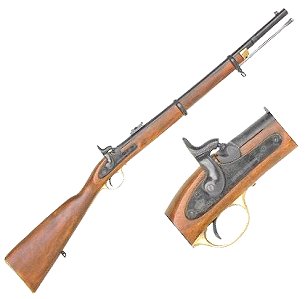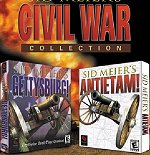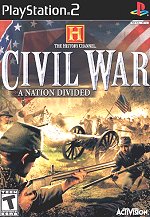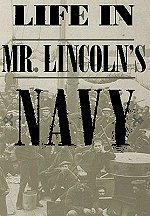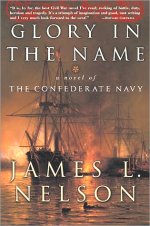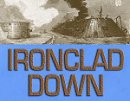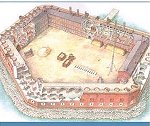CSS Florida (1862-1864)
CSS Florida , a steam screw cruiser of about 700 tons, was built in England in 1862 under the name Oreto . Secretly purchased by the Confederate States Navy, she sailed in March 1862 for the Bahamas in the guise of a merchant ship. After her arrival, she was fitted as a naval vessel and commissioned in August 1862, commanded by First Lieutenant John Newland Maffitt . With her crew largely disabled by yellow fever, Florida went to Cuba and, on 4 September 1862, ran the Federal blockade into Mobile, Alabama. After completing her outfitting, Maffitt took his ship back out through the blockade on 16 January 1863.
Operating in the Atlantic and West Indies over the next eight months, Florida captured twenty-two prizes, striking terror in the United States' merchant marine and frustrating the U.S. Navy's efforts to catch her. In August 1863, she went to Brest, France, remaining there until the following February, when she again got to sea past watching Federal forces. Under the command of First Lieutenant Charles M. Morris , Florida took another eleven prizes between then and October 1864, when she arrived at Bahia, Brazil.
While anchored in that port on 7 October, Florida was attacked, captured and towed to sea by USS Wachusett , in violation of Brazilian neutrality. After being taken to the U.S., her return to Brazil was ordered by the courts. However, before this could be done, on 28 November 1864 Florida was accidently sunk off Newport News, Virginia.
Report of Commander Napoleon Collins, U.S. Navy, commanding U.S.S. Wachusett , of the seizure by that vessel of C.S.S. Florida
U.S.S. Wachusett St. Thomas, West Indies, October 31, 1864 . |
SIR:
The following is a detailed report of the capture of the rebel steamer Florida in the Bay of San Salvador, Brazil, by the officers and crew of this vessel, without loss of life:
At 3 o'clock on the morning of the 7th day of October instant we slipped our cable and steered for the Florida , about five-eighths of a mile distant. An unforseen circumstance prevented us from striking her as intended. We, however, struck her on the starboard quarter, cutting down her bulwarks and carrying away her mizzenmast and main yard. This ship was not injured.
Immediately upon striking we backed off, believing she would sink from the effects of the blow.
In backing clear we received a few pistol shots from the Florida , which were returned with a volley, and, contrary to my orders, two of my broadside guns were fired, when she surrendered.
In the absence of Captain Morris, who was on shore, Lieutenant Thomas K. Porter, formerly of the U.S. Navy, came on board and surrendered the Florida with fifty-eight men and twelve officers, making at the same time an oral protest against the capture.
Five of the Florida 's officers, including her commander and the remainder of her crew, were on shore.
We took a hawser to the Florida and towed her to sea.
In contemplating the attack on the Florida in the bay I thought it probable the Brazilian authorities would forbear to interfere, as they had done at Fernando de Noronha when the rebel steamer Alabama was permitted to take into the anchorage three American ships, and to take coal from the Cora [ Louisa ] Hatch within musket shot of the fort, and afterwards, within easy range of their guns, to set on fire those unarmed vessels.
I regret, however, to state that they fired three shotted guns at us while we were towing the Florida out.
Fortunately, we received no damage. After daylight a Brazilian sloop of war, in tow of a paddle gunboat, was discovered following us. With the aid of sail on both vessels we gradually increased our distance from them.
We had three men slightly wounded; one only of the three is now on the sick report.
I enclose the list of the prisoners. Those who have a star opposite their names were formerly in the U.S. Navy.
This vessel is ready for service. The Florida will require repairs of machinery, a new mizzenmast, etc.
The officers and crew manifested the best spirit. They have my thanks for their hearty cooperation, in which I beg to include Thomas F. Wilson, esq., U.S. consul at Bahia, who volunteered for any duty.
I am, sir, very respectfully, your obedient servant,
| N. Collins, Commander |
Hon. GIDEON WELLES,
Secretary of the Navy .
19th Century photograph of an artwork depicting the ship at St. George's, Bermuda, 1863.
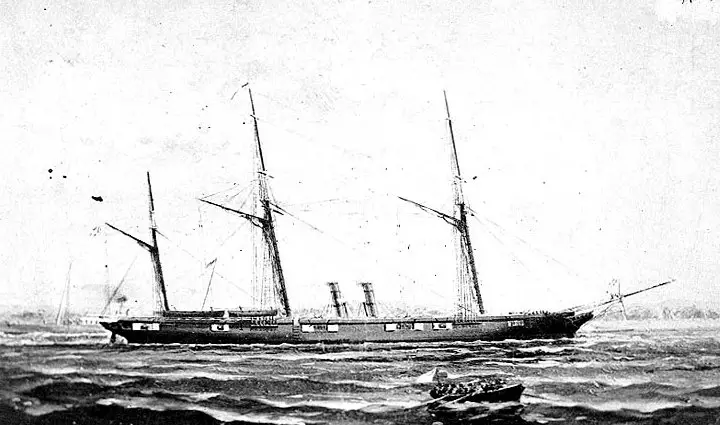
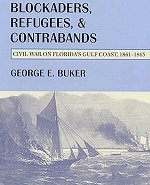
Blockaders, Refugees, and Contrabands: Civil War on Florida'S Gulf Coast, 1861-1865
Coastal Florida had a refugee crisis as the war progressed. Escaped slaves ("contrabands") sought out the blockaders. Some joined the U.S. Navy. White men and their families sought to avoid conscription or vengeful neighbors/regulators and eventually sought refuge with the blockaders

Duel on the Roanoke - The True Story of the CSS Albemarle
A 158-foot Confederate ironclad ship built in a cornfield 90 miles up North Carolina's Roanoke River, under the direction of an 18-year-old boy, and the deadly cat-and-mouse game between the two opposing captains..
Kindle Available

Wolf of the Deep: Raphael Semmes and the Notorious Confederate Raider CSS Alabama
In July 1862, the Confederate captain Raphael Semmes received orders to report to Liverpool, where he would take command of a secret new British-built steam warship.
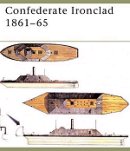
Confederate Ironclad 1861-65
Every aspect of Confederate ironclads is covered: design, construction, armor, armament, life on board, strategy, tactics, and actual combat actions.


